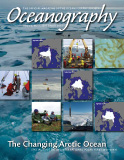First Paragraph
Over the past 20 years, drastic changes have occurred at the basin scale in all Arctic sea ice characteristics: extent and concentration, thickness and distribution, drift and deformation, and age and category. The Arctic sea ice annual cycle is trending toward that of Antarctica, where most sea ice melts in summer and forms in winter (see Perovich, 2011, in this issue). To be able to predict future changes in the Arctic and their consequences, we need to understand and attribute the causes of rapid evolution of sea ice, ocean, and atmosphere that are currently underway. During the fourth International Polar Year (IPY), the European project DAMOCLES (Developing Arctic Modeling and Observing Capabilities for Long-term Environmental Studies) demonstrated that a sea ice-centric approach was very efficient for tracking climate changes. But, to understand Arctic sea ice variability, it is essential to simultaneously observe the atmosphere and the ocean.

